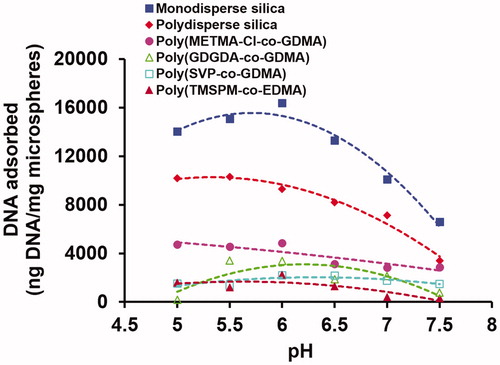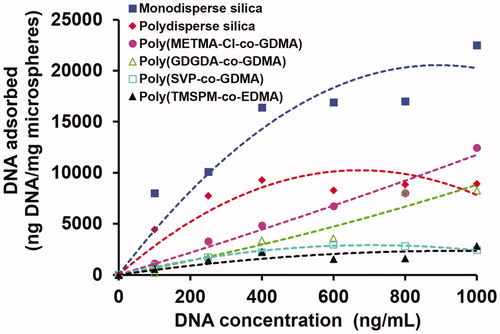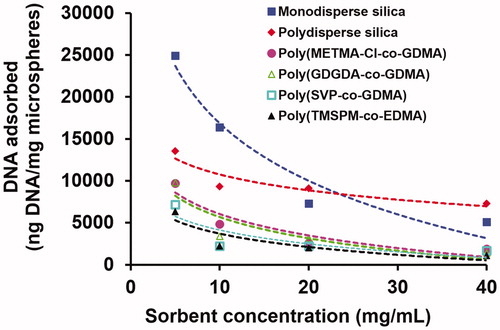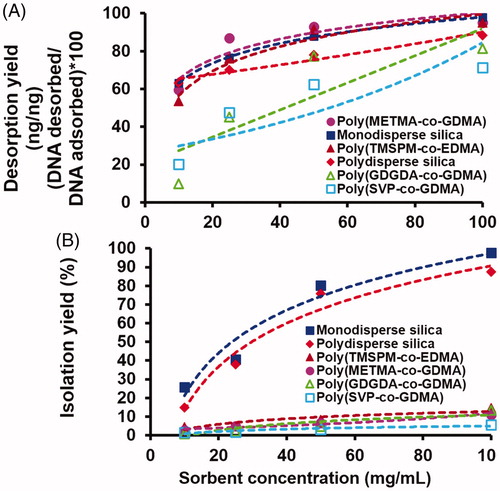Figures & data
Table 1. The types and properties of particulate stationary phases used for DNA microextraction in microfluidic system [Citation27].
Figure 1. The effect of pH on the equilibrium DNA adsorption onto the silica and polymer based microspheres. Initial DNA concentration: 400 ng/μL, sorbent concentration: 10 mg/mL. Adsorption time: 2 h, room temperature, stirring rate: 250 rpm.

Figure 2. The effect of initial DNA concentration on the equilibrium DNA adsorption onto the silica and polymer based microspheres. pH: 6.0, sorbent concentration: 10 mg/mL. Adsorption time: 2 h, room temperature, stirring rate: 250 rpm.

Table 2. The constants and correlation coefficients determined with different adsorption isotherms using silica and polymer based microspheres as the sorbents for human genomic DNA adsorption.
Figure 3. The effect of sorbent concentration on the equilibrium DNA adsorption onto the silica and polymer based microspheres. Medium pH: 6.0, initial DNA concentration: 400 ng/μL. Adsorption time: 2 h, room temperature, stirring rate: 250 rpm.

Figure 4. The variation of DNA (A) desorption yield, (B) isolation yield and (C) amount of DNA isolated with the sorbent type. Desorption medium: Tris (10 mM)–EDTA (1 mM) buffer at pH 8.5. Adsorption conditions: initial DNA concentration: 400 ng/μL. Medium pH: 6.0, sorbent concentration: 10 mg/mL. Adsorption time: 2 h, room temperature, stirring rate: 250 rpm. Sorbent type: (1) monodisperse silica, (2) polydisperse silica, (3) poly(TMSPM-co-EDMA), (4) poly(METMA-Cl-co-GDMA), (5) poly(GDGDA-co-GDMA) and (6) poly(SVP-co-GDMA).

Figure 5. The variation of DNA (A) desorption yield and (B) isolation yield with the sorbent concentration. Desorption medium: Tris (10 mM)–EDTA (1 mM) buffer at pH 8.5. Sorbent concentration: 10–100 mg/mL (variable). Adsorption conditions: initial DNA concentration: 400 ng/μL. Medium pH: 6.0, sorbent concentration: 10 mg/mL. Adsorption time: 2 h, room temperature, stirring rate: 250 rpm. Sorbent type: (1) monodisperse silica, (2) polydisperse silica, (3) poly(TMSPM-co-EDMA), (4) poly(METMA-Cl-co-GDMA), (5) poly(GDGDA-co-GDMA) and (6) poly(SVP-co-GDMA).

